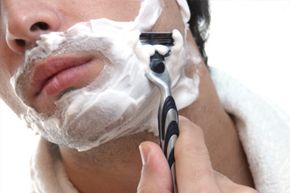You shave, you moisturize and you use expensive skin care products, but after all these daily rituals, you still don't have the baby-smooth skin you desire. Despite all your time and trouble, you're left with tiny, red bumps on your skin: ingrown hairs.
Ingrown hairs are exactly what they sound like. They're hairs that grow out of the hair follicle and then curl around and grow back in. In many cases, the hairs don't even grow entirely out of the skin. They simply grow sideways and become trapped in the skin, causing irritation [source: Jay].
Advertisement
Most people experience ingrown hairs as small, red bumps, but if you look closely at the bumps, you may see tiny hairs trapped in the center. These bumps are sometimes called "razor bumps" because they often appear on recently shaven skin. Although they may be painful, most ingrown hairs usually go away on their own. However, sometimes the hair follicle can become infected and require treatment. Any part of the body you regularly shave can be susceptible to ingrown hairs [source: Mayo Clinic]. For men, this means the face and neck. For women, the most common areas for ingrown hairs are the legs, underarms and bikini line.
Read on to learn more about ingrown hairs and how you can prevent them.
Advertisement
